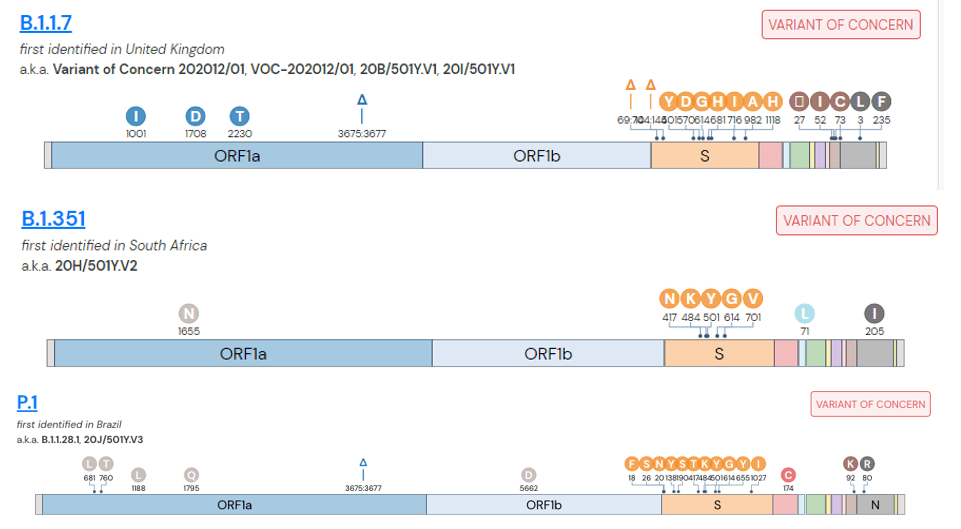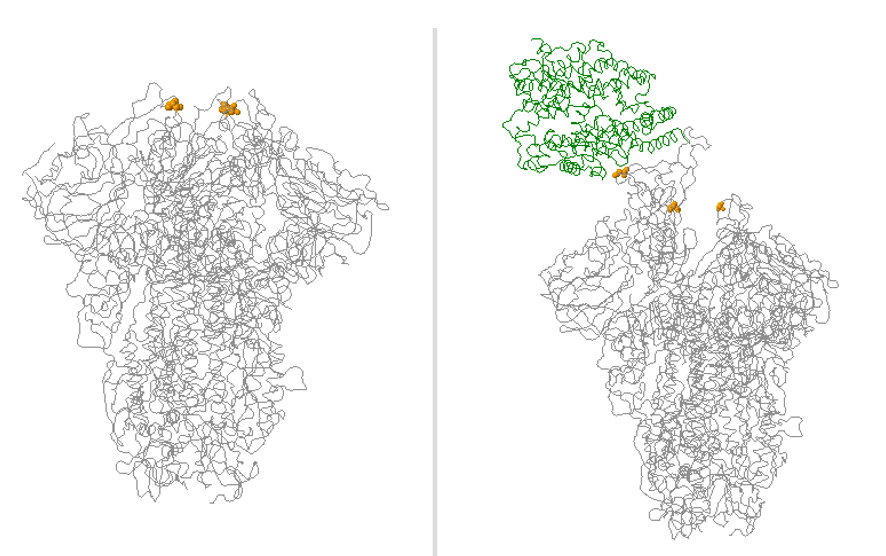Since my last post on the B.1.1.7 (UK) variant, several other variants have arisen. I wanted to describe what makes some Variants of Interest and other Variants of Concern. While a “variant” is often synonymous with a mutation in genetic terms, in the context of SARS-CoV-2, variant means an alternative strain of the virus.
To become a Variant of Interest (VOI), the World Health Organization (WHO) or Centers for Disease Control (CDC) has the following characteristics:
- Evidence of variants that affect transmission, resistance to vaccines/ therapeutics, mortality, or diagnostic tests
- Evidence that the variants is contributing to a rise in the proportion of cases in an area.
- However, limited geographical spread.
Examples: P.2 (from Brazil) B.1.525 (New York), and B.1.526 (New York).
Variants of Concern have increased problems with the same characteristics listed above:
- Evidence of reduced vaccine protection from severe disease
- Evidence of substantially reduced response to neutralizing antibodies or therapeutics
- Evidence of widespread spread
- Increased Transmissibility or disease severity
Current VOCs: B.1.1.7 (UK), B.1.351 (South Africa), P.1 (Brazil), and B.1.427/ B.1.429 (California).
The initial VOC of B.1.1.7, B.1.351 and P.1 were identified from having increased spread and more mutations than expected, especially in the Spike gene region (Figure 1).

The N501Y mutation in the Spike protein is present in each VOC. It is located at the tip of the protein that binds the ACE2 receptor, increasing binding strength.

So far, vaccines react against the B.1.1.7 variant. However, B.1.351 pseudovirus shows decreased neutralization by both Moderna and Pfizer sera. Specifically, the E484K mutation in the Spike protein confers resistance to neutralizing antibodies. Thus, the strains B.1.351 and P.1 are more likely to be resistant as would any other strain with the E484K variant.

Lastly, the California variant arose as it was found to rise in prevalence from November to February. The key mutations include W152C and L452R, but the significance of this variant is uncertain. However, this variant has begun to spread over much of Southern California and Nevada.

References
- Wu K, Werner AP, Moliva JI, Koch M, Choi A, Stewart-Jones GBE, Bennett H, Boyoglu-Barnum S, Shi W, Graham BS, Carfi A, Corbett KS, Seder RA, Edwards DK. mRNA-1273 vaccine induces neutralizing antibodies against spike mutants from global SARS-CoV-2 variants. bioRxiv [Preprint]. 2021 Jan 25:2021.01.25.427948. doi: 10.1101/2021.01.25.427948. PMID: 33501442; PMCID: PMC7836112.
- Tada T, Dcosta BM, Samanovic-Golden M, et al. Neutralization of viruses with European, South African, and United States SARS-CoV-2 variant spike proteins by convalescent sera and BNT162b2 mRNA vaccine-elicited antibodies. Preprint. bioRxiv. 2021;2021.02.05.430003. Published 2021 Feb 7. doi:10.1101/2021.02.05.430003
- Gangavarapu, Karthik; Alkuzweny, Manar; Cano, Marco; Haag, Emily; Latif, Alaa Abdel; Mullen, Julia L.; Rush, Benjamin; Tsueng, Ginger; Zhou, Jerry; Andersen, Kristian G.; Wu, Chunlei; Su, Andrew I.; Hughes, Laura D. outbreak.info. Available online: https://outbreak.info/ (2020)
- https://www.cdc.gov/coronavirus/2019-ncov/cases-updates/variant-surveillance/variant-info.html

–Jeff SoRelle, MD is Assistant Instructor of Pathology at the University of Texas Southwestern Medical Center in Dallas, TX working in the Next Generation Sequencing lab. His clinical research interests include understanding how lab medicine impacts transgender healthcare and improving genetic variant interpretation. Follow him on Twitter @Jeff_SoRelle.
